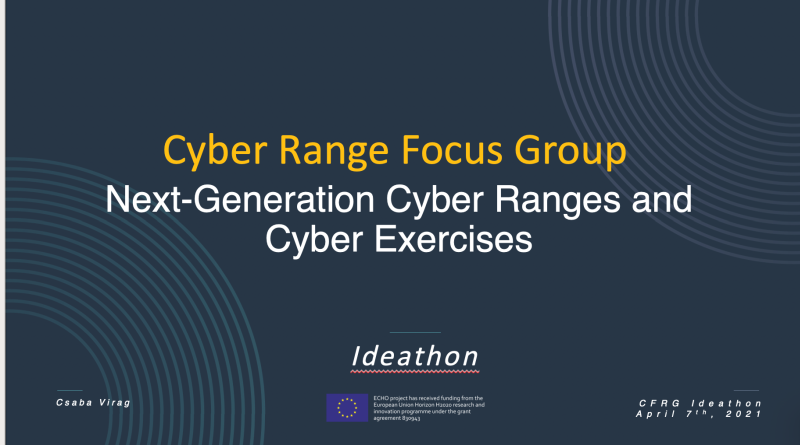The first Cyber Range Focus Group (CRFG) Ideathon took place on April 7th 2021. The CRFG coordinates the cyber range activities of the four pilot projects preparing the European Cybersecurity Competence Network and ECSO. A diverse group of 24 participants worked on three different tracks to generate ideas about the next generation of cyber ranges:
- Technical capabilities of nextgen cyber ranges
- Capabilities of next gen cyber ranges
- EU internal digital market for cyber ranges.
The track discussing the capacity of the next generation cyber ranges shared ideas about the current generation of cyber ranges, how they are used and what existing components can be improved (e.g. analytical tools to track user and cyber range performance, more realistic simulation tools mimicking user behaviour and internet). Ideas were also shared about more fundamental improvements, such as the concept of ‘digital twins’, where organisations could upload a copy of their ICT-production environment into a cyber range and use the range for training and testing purposes.
The track discussing the capabilities of the next generation cyber ranges discussed the current market of cyber ranges and how the supply and demand side meet. Also, the ranges should support the certification process for knowledge and dynamically adjust to use cases (training content, topology, etc.). One point noted is that currently organisations do not have a marketplace where they can find cyber range providers and mix and match service offerings. Finding the right exercise for an organisation is challenging. Ideally, at EU-level common standards could be defined for cyber ranges and thus support organisations in the process of selecting cyber range offerings and defining their expectations when buying the service.
Finally, the track discussion the EU single digital market for the next generation cyber ranges covered many topics. Key points discussed where the demand and supply side as well as possible incentives to develop the EU single cyber range market. A challenge for the EU single market for cyber ranges is the diversity of purposes of cyber ranges (education, training, product testing, etc…) and their verticalization per sector, requiring sector specific scenarios. Key words here are adaptability and accessibility. SMEs can be potentially a large market for cyber ranges but might perceive cyber ranges as a tool for the military or large organisations. Finally, possible ways to generate demand for cyber ranges include financial and policy initiatives, such as the EU cybersecurity certification framework which can generate demand for cyber ranges that can test products, services and processes.
The main conclusion of the event was that a wealth of ideas was generated and that the discussions should be continued and further refined in future sessions of the Cyber Range Focus Group.

